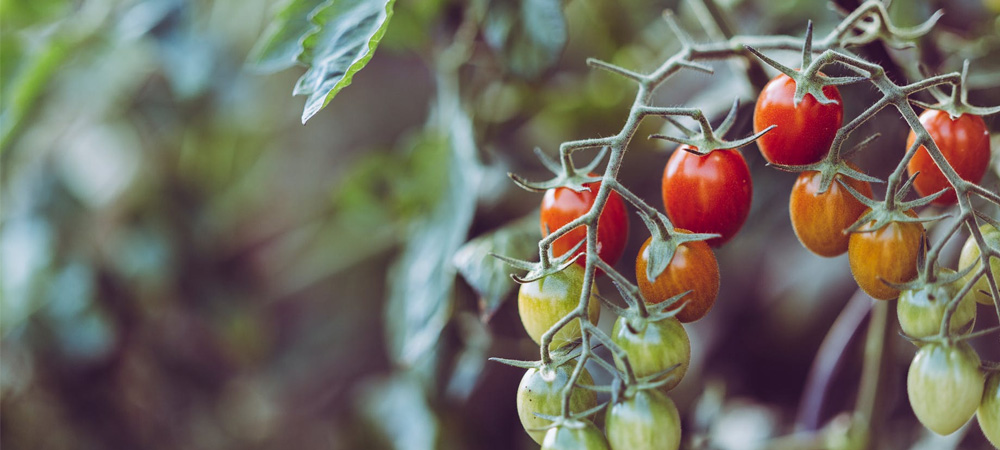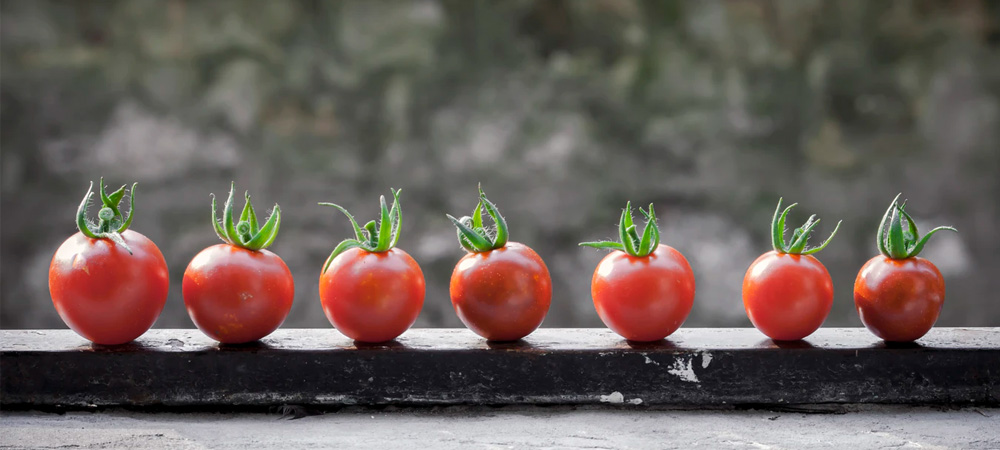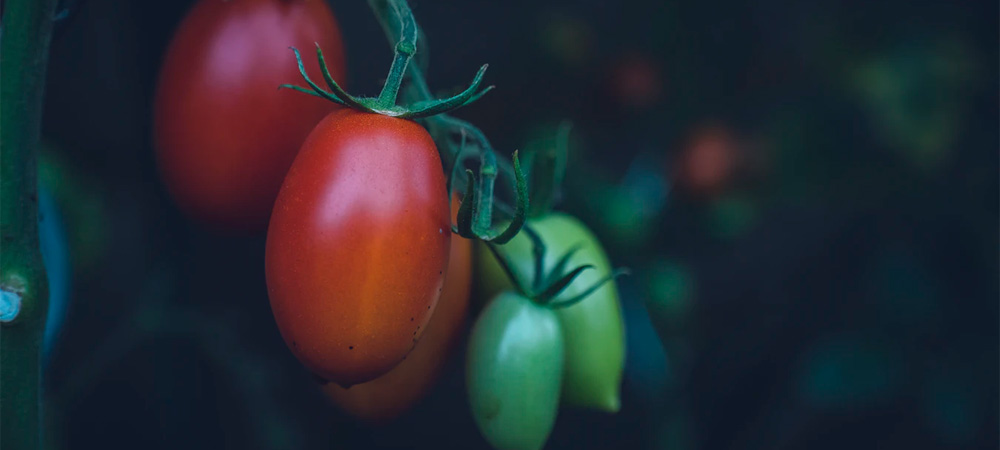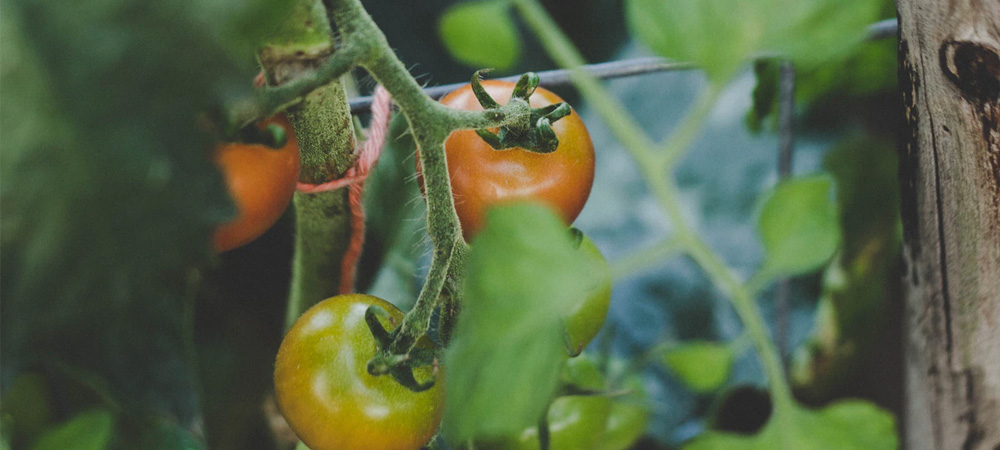Growing Tomatoes in a Greenhouse

How to Grow Tomatoes in a Greenhouse
You will almost certainly have better luck growing tomatoes in a greenhouse rather than outside. This is because you can control the climate of a greenhouse.
Tomatoes are an excellent fruit to grow in a greenhouse. Some of your other plants may be a little easier to grow but the extra care you take with tomatoes will be worth it when you get to enjoy this delicious fruit.
If you are growing tomatoes in a greenhouse you will want to keep the greenhouse warmed to 21 - 24 degrees Celsius. You will want to ensure your plants get sufficient sunshine and ventilation. You will also want to use soil that has been fertilised.
When growing tomatoes in a greenhouse some of the best tomato varieties to try include:
- Sungold
- Sweet Million
- Gardener's Delight
- Cappricia
When growing in a greenhouse, plant your tomatoes between late February and mid-March.
First, gather your supplies. You will need tomato seeds (or plants), stakes, string and soil fertilizer and nutrients.
Begin by preparing your soil. Ensure your soil contains fertiliser and nutrients, if not you will need to add some. Tomato seeds should be planted about 2 to 3 inches under the soil. Tomato plants need to be planted deep enough that the stem of the tomato plant is under the soil. Tomato plants need to be staked so they don’t fall over and collapse.
You will need to ensure your tomato plants stay warm. If the temperature is going to fall below 60 degrees Fahrenheit (15 degrees Celsius) at night make sure you bring your plants inside. If you can keep the temperature between 70 - 75 degrees Fahrenheit (21 - 24 degrees Celsius) and provide plenty of sun and ventilation your plants will flourish.
Some humidity can be good for a greenhouse but too much can be disastrous. Aim to keep your humidity levels below 90 percent. it is also essential to have sufficient ventilation. Consistent airflow can be achieved by simply opening a window or installing an exhaust fan. If you allow the hot air to escape you will significantly decrease the risk of disease to your tomato plants. Finally, it is essential to consider how much sunlight your plants are able to get. Tomato plants need quite a bit of light so placing them close to a window or grow light will be beneficial.
**If you need to buy a greenhouse, then here at South West Greenhouses we have a range covering all sizes from small and lean to variaties, to large greenhouses and potting sheds (greenhouses combined with a shed).
How to Care for Tomatoes in a Greenhouse

Watering
People often ask how much water tomato plants need. A good and simple guideline to follow is to over-water at first and then wait until the soil is dry to water again. Tomato plants need to be watered at least every other day if not every day. Test the soil frequently and if it is dry, give your plants more water. Misting the plants with a spray bottle will help by preventing over-watering and reducing the amount of soil on the leaves. Be gentle with your watering as splashing can increase the risk of disease.
Water your plants in the morning. This prevents too much water being lost to evaporation. Stop watering a couple of hours before sunset so you give the leaves a chance to dry before night. Wet leaves can attract fungus spores, especially at night. It is important to water your tomato plants regularly, if you think you might not be able to water your plants consistently an irrigation system can be extremely beneficial. Drainage is also essential for the health of your plants so ensure there are holes in the bottom of your containers to allow any excess water to escape.
Proper Lighting
Sunlight is crucial for your tomatoes, so make sure you put them in a spot where they can get plenty of sunlight or install some grow lights in your greenhouse. The light will also serve to keep your plants warm enough. Tomatoes require lots of sunlight so putting them close to a window or under good grow lights will help your tomatoes grow.
Staking Plants
You will need to provide support for your tomato plants by staking them. Stakes often come in the form of wood, plastic or bamboo sticks with a pointed end. Place the stake next to your plant. As the plant grows use garden twine, fabric or nylon to tie the stalk of the plant loosely to the stake. The plant will need to be tied about every six to eight inches. If you don’t stake your plants you may find that they collapse.
Best Tomatoes to Grow in a Greenhouse UK

The best tomato variaties to grow in a greenhouse in the UK are:
- Sungold
- Cappricia
- Gardener's Delight
- Sweet Million.
These are all great for growing in a greenhouse. The Sweet Million variety is especially good for small greenhouse. Read the back of the seed package to help you determine the requirements for each of the different types of tomato plants.
You will want to know which kind of tomato plants you are growing. Do you have the neat and compact determinate plants or the larger and more tasty intermediate variety? If you are not sure, the seed package you used should tell you.
Determinate plants will do fine in pots and smaller spaces. They will need a lot of watering.
Intermediate tomato plants will grow much larger and taller and obviously need more space. Intermediate plants definitely need to be staked as some varieties can grow over ten feet tall! If you have a very small greenhouse you may want to investigate miniature and dwarf tomato plants.
Best Soil for Growing Tomatoes
To best prepare your soil for planting tomatoes you will want to add fertiliser and nutrients. Begin by adding compost, this will provide the nutrients your soil needs. Mix the compost in thoroughly with the existing soil. Working in the compost will benefit your plants in two ways. When you mix the compost into the soil you will be breaking up the soil making it easier for the roots to grow. Secondly, you will be providing important nutrients. Find a fertiliser with a high phosphorus level and put some in the hole before putting the tomato plant in.
It is essential to use the correct compost for your plants and their environment. If your plants are in a greenhouse and not getting any natural rainfall you may need to neutralize the compost by adding some leaves or hay. Similarly, if you put in too much compost it can burn your plants.

When you are choosing the best fertiliser for your plants try to find one with high levels of phosphorus as well as potassium, calcium, nitrogen and magnesium. Fertilize your plants three times throughout the growing season. Fertilize when you first plant, when the fruit begins to grow and finally when the first tomato is picked. The fertilser should be applied a significant distance (about 4 inches) from the stem to reduce the chance of burning the plant.
Common Problems Growing Tomatoes
The following are a few of the most common tomato plant problems:
- You didn’t give them enough space: If you planted your tomato plants too close together you may have difficulty growing them to their full potential. As discussed earlier, each variety will have different requirements for growing. Some will need more space or more stakes while others will be okay being close to each other. Look at the variety you planted and see how far apart they need to be planted from each other.
- Planting in the same area (not rotating plants): Planting tomatoes over and over in the same area will cause the soil in that area to lose nutrients. You may see more disease and less healthy tomatoes on your plants. Ensure you add the required nutrients to the soil each year if you are planting in the same spot or find a different place to plant.
- Not enough water: It is crucial to give your tomato plants sufficient water. There is more information about this above.
- Too much water: It is possible to overwater your plants. Allow the plants to dry out between waterings. If this is the case you may notice your tomatoes will crack.
- Nitrogen high fertiliser: A fertiliser high in nitrogen will cause more leaves but it ultimately leads to less tomatoes.
- Pests or diseases
Combatting Tomato Pests and Diseases
It is not unusual to find pests of some kind attacking your tomato plants. Whiteflies and aphids are the most common but you may also have to deal with cutworms, flea beetles, and nematodes. Pests have a negative effect on your plants and it is important to deal with them quickly and effectively. Here are some tips to help you deal with these pesky pests.
- Aphids: If some of the leaves are more affected by aphids than others, remove the most affected leaves. Add some ladybugs to your garden as they will eat the aphids. You may want to apply an insecticidal soap.
- Cutworms: Place a cone of cardboard around the seedlings to avoid getting cutworms.
- Flea beetles: Sticky traps work well for flea beetles. Simply covering your plants when they are young may be enough to protect them from flea beetles. If nothing else works there are pesticides that can be used.
- Nematodes: Rotating your plants should be enough to avoid these pests but as a last resort you could sterilize your soil.
- Whiteflies: Sticky traps work well for whiteflies. Ladybugs will eat the whiteflies. Using a spray hose when watering may help eliminate the problem. There are some pesticides that work to get rid of whiteflies.
There are several diseases that can have a detrimental effect on your tomato plants. To protect your plants from disease ensure you start with great soil that has been fertilised. You should also get rid of any weeds and unhealthy leaves. You can further help avoid disease by rotating your crops each year. Finally, you should be aware that tobacco can infect your plants with disease so don’t smoke near your plants and wash your hands before handling your plants.
Growing Tomatoes vs Other Veg
Tomatoes typically need higher temperatures than many other plants and an adequate amount of light. This is important to remember because if you have a plant that needs shade that you want to plant in your greenhouse it may not work well with your tomatoes. Tomatoes need space, their own container and stakes to help support them. The biggest difference, however, between tomatoes and some other plants is that you may need to pollinate them by hand. If you are growing your tomatoes in a greenhouse there will be a lack of wind so you will need to use an electric toothbrush to vibrate your plant or simply shake the stem to release pollen.
You can read our best choice of veg to grow in a greenhouse here.
Common Tomatoe Growing Questions
Do Tomatoes Do Well in a Greenhouse?
Yes tomatoes definitely do well when grown in a greenhouse. This is because you can control the growing environment more effectively in a greenhouse, which makes them more likely to succeed.
Can you grow tomatoes all year round?
If you plant your tomatoes in a greenhouse they can be grown year round.
How Long Do Tomatoes Take to Grow in a Greenhouse?
Tomatoes take roughly 2-3 months to grow and bear fruit when grown in warm conditions (such as in a heated greenhouse).
Can you over water tomatoes?
Yes. If you start to see cracks in the tomatoes or bumps on the leaves, it is a sure sign that you are overwatering.
When is the best time to plant tomatoes?
April is traditionally the best time to start your tomato plants but if you are planting in a greenhouse with a grow light and the climate is properly sustained you can plant tomatoes year round.
Should you grow tomatoes in grow bags or pots?
See our full post on this here.
If you're looking to buy a greenhouse, checkout our buyers guide here.
We also have a range of related articles below:
 Author:
Author: